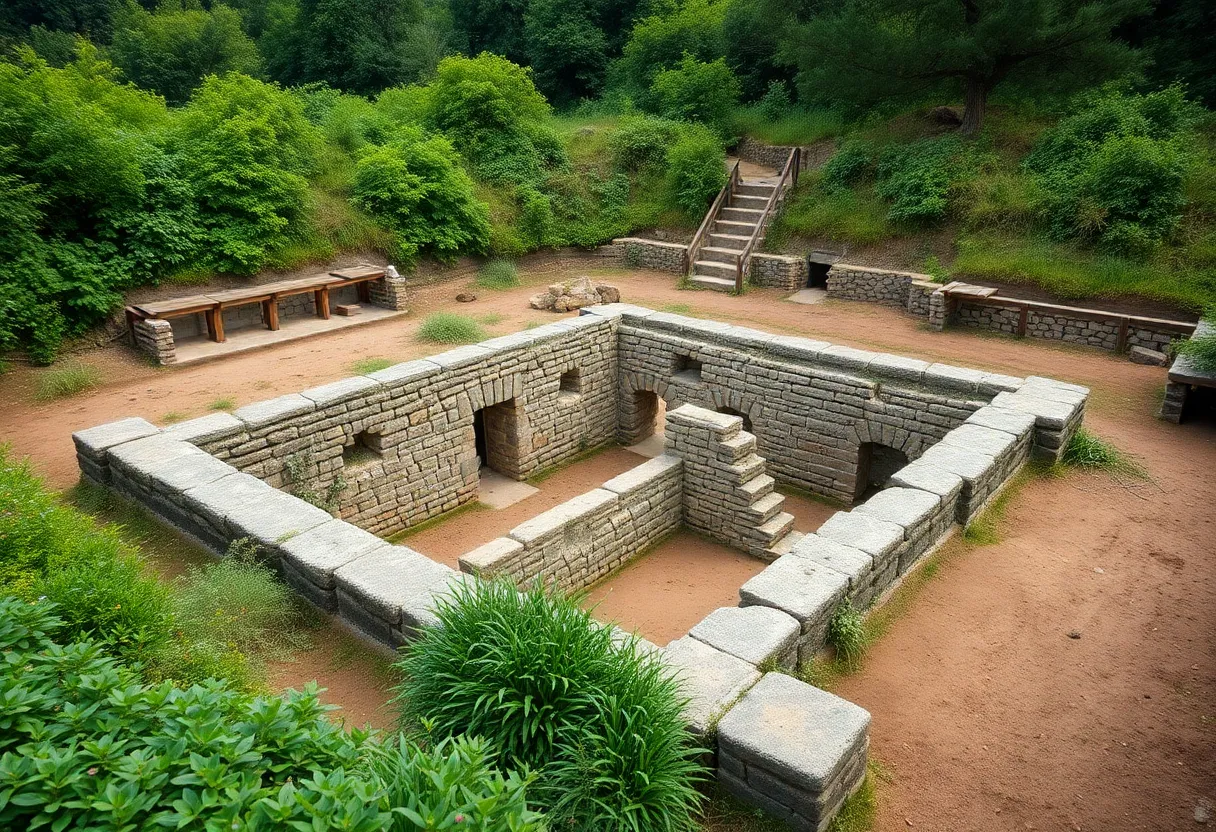News Summary
An archaeological excavation at the College of William & Mary has uncovered the intact foundations of the Williamsburg Bray School, which operated in the 18th century to educate free and enslaved Black children. This significant find includes artifacts that shed light on the daily lives of students and the historical context surrounding the school. The school played a vital role in American history and will be showcased in a new museum, emphasizing the importance of educational narratives in contemporary discussions of race and history.
Williamsburg, Virginia – An archaeological excavation conducted at the College of William & Mary revealed the nearly intact foundation of the historic Williamsburg Bray School, a significant educational institution for free and enslaved Black children during the 18th century. The dig took place under Robert M. Gates Hall, where researchers discovered the essential remnants of a school that operated from 1760 to 1765, profoundly impacting the education of numerous children during its brief existence.
The Williamsburg Bray School is noted for its unique role in American history; it educated primarily enslaved children, with approximately 93 percent of its students belonging to this category. Colonial Williamsburg has been able to identify 86 of these students by name, providing a critical link to understanding their lives. This institution was established with the intent of teaching students about the tenets of the Anglican church while promoting the belief that their circumstances were divinely ordained.
A significant figure connected to the school was Ann Wager, who served as the teacher. She began classes early, starting at 7 AM in winter and 6 AM in summer, demonstrating the rigorous educational environment that characterized this period. The excavation revealed a previously undocumented cellar, measuring around 36 by 18 feet, with structural indications of two different levels, highlighting the complexity of the site’s construction.
In addition to the foundational discovery, hundreds of artifacts ranging from the 18th century to the mid-20th century were recovered. Among these items were jewelry, pottery sherds, slate pencil fragments, and buttons, showcasing the daily lives and activities of the individuals associated with the school. Notably, colonoware pottery was uncovered, providing insights into the lives of enslaved individuals and Indigenous communities. Researchers also found Greek Revival ceramics, likely belonging to early 20th-century Methodist women.
A standout artifact included a piece of glass depicting Minerva, the Roman goddess of wisdom, which adds a layer of cultural depth to the findings. These artifacts will be displayed in a new archaeology center at Colonial Williamsburg and will feature in a permanent exhibit at Gates Hall, which aims to underscore the educational and historical significance of the Bray School.
The Williamsburg Bray School is recognized as one of the earliest institutions dedicated to the education of Black Americans in the United States. Even after its closure, the building continued to serve the community as a private home and later a residence for Methodist women attending the college from 1924 until 1930. This continuation of use reflects the school’s lasting influence on the community and its evolving role in the cultural narrative of the region.
The current excavation project was sparked by a generous donation of $30 million designated for renovating Brown Hall into Robert M. Gates Hall, intended to create a nexus for research and teaching. The discoveries made during the excavation contribute significantly to a broader understanding of the experiences of Black children in early America, particularly at a time when certain states are beginning to restrict educational content regarding this aspect of history.
The relevance of the Williamsburg Bray School has been further emphasized with the opening of a museum dedicated to its history on June 19, coinciding with Juneteenth. This timing reinforces the ongoing discussions surrounding education, race, and historical awareness in the United States as the site continues to serve as a vital educational resource.
Deeper Dive: News & Info About This Topic
HERE Resources
Significant Archaeological Discovery at Bray School Site
Discovery of Williamsburg Bray School Foundation
Williamsburg Bray School for Black Children Opens to Public
Archaeological Discoveries at Williamsburg Bray School
Archaeological Discoveries at Williamsburg Bray School Site
Juneteenth Celebrations Planned in Greater Williamsburg
Williamsburg Celebrates Juneteenth with Community Events
Discover the Blend of History and Modern Charm in Williamsburg
Additional Resources
- Coastal Virginia Magazine: Discovering the Bray School
- Popular Mechanics: Historic Black School Discovery in Virginia
- Washington Post: Williamsburg Bray School Discovery of Enslaved Children
- New York Times: Bray School in Virginia and Its Significance
- Smithsonian Magazine: Artifacts from One of the Nation’s Oldest Schools for Black Children
- Wikipedia: Williamsburg Bray School
- Google Search: Bray School Virginia
- Google Scholar: Bray School Virginia
- Encyclopedia Britannica: Bray School
- Google News: Bray School Virginia
Author: STAFF HERE WILLIAMSBURG WRITER
The WILLIAMSBURG STAFF WRITER represents the experienced team at HEREWilliamsburg.com, your go-to source for actionable local news and information in Williamsburg, James City County, and beyond. Specializing in "news you can use," we cover essential topics like product reviews for personal and business needs, local business directories, politics, real estate trends, neighborhood insights, and state news affecting the area—with deep expertise drawn from years of dedicated reporting and strong community input, including local press releases and business updates. We deliver top reporting on high-value events such as Williamsburg Farmers Market, Yorktown Market Days, and Busch Gardens Food & Wine Festival. Our coverage extends to key organizations like the Greater Williamsburg Chamber of Commerce and Colonial Williamsburg Foundation, plus leading businesses in education and hospitality that power the local economy such as College of William & Mary, The Williamsburg Winery, and Sodexo. As part of the broader HERE network, including HEREVirginiaBeach.com, we provide comprehensive, credible insights into Virginia's dynamic landscape.


